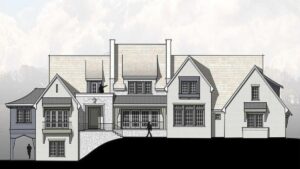When it comes to the design and construction of commercial buildings, every element plays a crucial role in functionality and aesthetics. The ceiling, often overlooked, is a significant aspect of corporate architecture, impacting everything from employee productivity to maintenance costs. In this article, we look at some common types of ceilings in commercial buildings.
Suspended Ceilings
A popular choice in many corporate buildings, suspended ceilings are practical and versatile. They consist of a metal grid suspended below the actual ceiling, with tiles attached. The materials for these tiles vary, but plasterboard and mesh are particularly favored for their cost-effectiveness and resistance to moisture and fire. The gap between the actual ceiling and the suspended part plays a key role in reducing noise from HVAC and plumbing systems.
Interstitial Ceilings for Easy Maintenance
Another type gaining traction, especially in buildings with evolving needs like hospitals, is the interstitial ceiling. Similar to suspended ceilings in hiding the building’s inner mechanics, interstitial ceilings go a step further by providing enough space to walk or crawl. This design greatly simplifies the process of cleaning, repairing, or rearranging pipes, wires, or ducts.
Acoustical Ceilings for Noise Control
In spaces where noise is a constant, such as airports, malls, or hotels, acoustical ceilings are a go-to solution. Made from materials like wood, foam, metal, or fiberglass, known for their sound-absorbing qualities, these ceilings can significantly reduce noise levels. With options to create various shapes like cubes and curves, these ceilings can also be a visual treat, adding a unique aesthetic to large commercial spaces.
Exposed Ceilings for an Industrial Look
Exposed ceilings showcase the building’s ductwork, wires, and plumbing systems openly. This style offers an industrial, raw look that has become increasingly popular in recent years. Its biggest advantage lies in the ease of access for maintenance and repairs, as there are no tiles or additional layers to navigate through.
As we explore the vast landscape of commercial building ceiling types, it’s clear that each design brings its unique set of benefits and challenges. For those considering purchasing online homes or hiring an architect, understanding these options is crucial. A well-designed ceiling can transform the look and feel of a space, making the role of knowledgeable Asheville architecture firms vital in bringing these designs to life in a way that meets both aesthetic and functional needs.
Elevate Your Architectural Vision
Ready to bring your architectural dreams to life? Contact Vinyet Architecture today for expert guidance in both commercial and residential designs. Together, let’s create spaces that inspire in the Carolinas.






